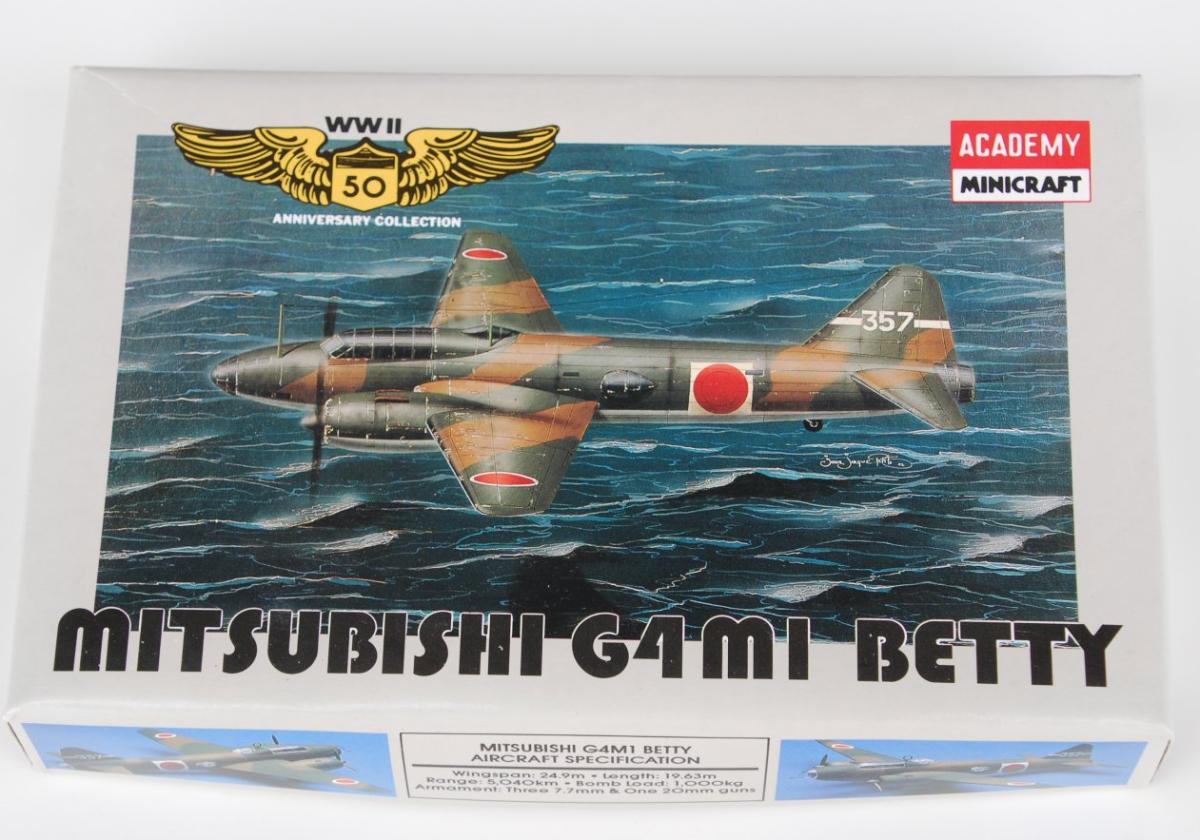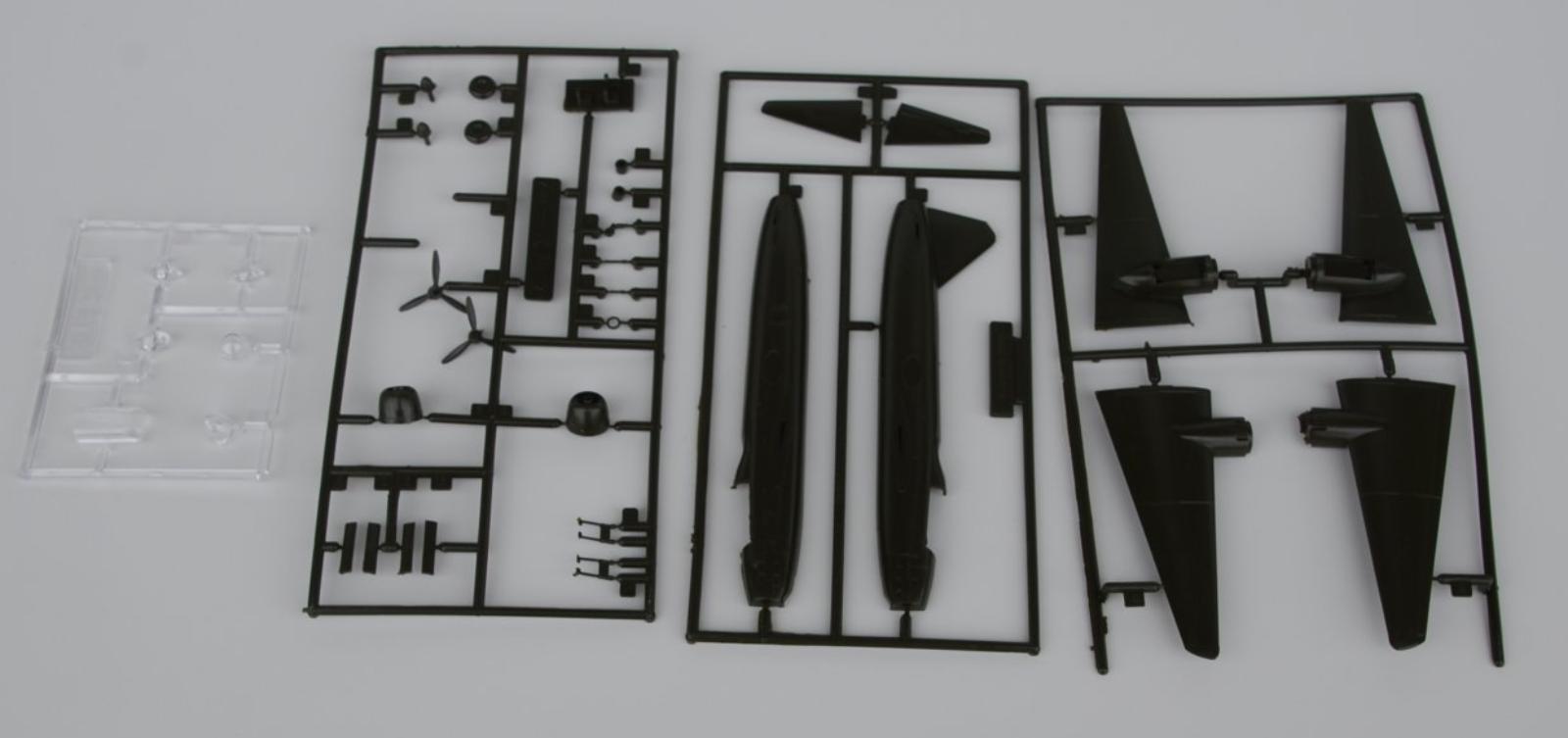Manufacturer: Academy
Scale: 1/144
Additional parts: none
Model build: Apr - May 2016

Manufacturer: Academy
Scale: 1/144
Additional parts: none
Model build: Apr - May 2016
The late summer air whipped across my face as I gripped the controls of the "Reisschüssel," the clunky nickname we’d given the new Japanese G4M bomber. August sun glinted off the English Channel far below, a channel that was no longer a barrier for the Luftwaffe. Thanks to these lumbering beasts with their impressive range, we could finally strike all of Britain.
I was Hauptmann Franz Schmidt, Staffelkapitän of the 3rd Staffel of Kampfgeschwader 100, the first unit equipped with the G4Ms. These “Rice Bowls,” as the ground crew affectionately (and perhaps a little mockingly) called them, were a gamble. They were marvels of engineering, boasting a range that dwarfed our Heinkels and Junkers. But they were lightly armored and new to us, with quirks and handling characteristics we were still learning.
Today’s mission was a hit on a munitions factory near Newcastle. Six of us rumbled north, a finger of steel against the green patchwork of England. Below, flak erupted, black puffs dotting the blue sky. Suddenly, the frantic chatter of the radio cut through the roar of the engines. “Enemy fighters, twelve o’clock high!”
My heart hammered a frantic tattoo against my ribs. Enemy fighters this far north? We’d only faced a few Spitfires on previous missions, easily handled by our escorting Messerschmitts. But a glance out the cockpit confirmed the radio’s warning. A squadron of Hurricanes, sleek and deadly, peeled off the cloud cover, diving towards us with a hungry glint in their polished metal.
The sky became a ballet of tracers and smoke. Our gunners unleashed a hail of fire, but the Hurricanes were agile hornets buzzing around lumbering bears. One Reisschüssel dipped erratically, smoke trailing from its engines. My stomach lurched. We couldn’t afford to lose these precious aircraft.
Just then, a cry of triumph crackled over the radio. Leutnant Weber, flying wingman, had managed to clip a Hurricane with his wing. The British fighter tumbled away, a flaming torch against the blue. The rest of the enemy fighters faltered, their momentum broken.
Seizing the opportunity, we pressed on, a battered but determined force. The factory loomed ahead, a sprawling mass of buildings. Bombs rained down, explosions blossoming like deadly flowers.
We limped home, two aircraft missing, the others bearing the scars of battle. The mission had been a success, but at a heavy cost. The gamble of the G4Ms was proving a dangerous one. These “Rice Bowls” might hold the key to bringing Britain to its knees, but they were as fragile as the precious cargo they carried - the hopes of a nation for a swift victory.
The radar crackled to life, Sergeant Evans squinting at the blips forming a scattered line on the green screen. "Looks like a new trick, lads," he muttered, his voice tight with a mixture of apprehension and grim determination. "Multiple bogies, high altitude, coming in from the east."
Squadron Leader Mitchell barked into his microphone, the clipped commands echoing through the tense silence of the briefing room. "Alright, chaps, looks like the Jerries are trying something new. Unidentified bombers, possibly long-range. Spitfires, scramble! We don't let them get a free run at the Midlands."
My heart hammered a frantic rhythm against my ribs as I clambered into the familiar cockpit of my Spitfire. The roar of the engine was a comforting counterpoint to the churning in my stomach. We'd been holding our own against the Luftwaffe's bombing raids, but this was something new. These weren't the lumbering Heinkels or Junkers we were used to facing. These were sleek, unfamiliar shapes on the horizon, glinting ominously in the morning sun.
As we clambered into the sky, the radio crackled with reports of the enemy bombers splitting into smaller formations, heading north. Mitchell's voice cut through the static, calm amidst the growing tension. "Alright, lads, looks like they're trying to spread us thin. Stay in pairs, cover each other's tails. Engage only when necessary, fuel efficiency is paramount."
We intercepted the first group of bombers just south of Sheffield. Unlike the slow, lumbering formations we were used to, these things were surprisingly nimble. They were escorted by a gaggle of unfamiliar fighters, their angular shapes unlike the stubby Messerschmitts we'd faced before. These were sleek and deadly, their machine guns spitting fire as they tried to keep us at bay.
The ensuing dogfight was a blur of adrenaline and fear. My Spitfire danced through the sky, dodging bursts of enemy fire as I tried to line up a shot on one of the bombers. They were unlike anything I'd ever seen, ungainly yet strangely menacing. Finally, I managed to get a bead on one, my cannons roaring as they sent plumes of black smoke spewing from the port engine. The bomber faltered, veering off course before disappearing into the clouds, a ball of flame trailing behind it.
But the victory was short-lived. A searing pain lanced through my wing as a burst of enemy fire found its mark. My Spitfire shuddered violently, smoke filling the cockpit. Panic threatened to overwhelm me, but years of training kicked in. I fought to keep the plane steady, limping towards the safety of the clouds, praying I could make it back to base.
As I nursed my crippled aircraft back towards the English coast, the sky was a churning mass of smoke and fire. The unfamiliar bombers, some trailing plumes of smoke, were retreating eastward, their mission seemingly aborted. We'd taken a beating, but we'd managed to bloody their nose. This was a new threat, a testament to the ever-shifting nature of this brutal war. But one thing was certain: the skies over Britain wouldn't fall easy. We'd fight tooth and nail, defending our island home against whatever the Germans, or their newfound allies, threw at us.

Excerpt from the Alternate History Chronicles of the Luftkrieg über Europa
In the spring of 1939, the German Reich and the Empire of Japan formalized a program of mutual assistance in advanced military aviation. As part of this cooperation, Luftwaffe test pilots gained access to newly developed Japanese aircraft such as the Mitsubishi A6M and G4M, while Japanese naval aviators were invited to evaluate German designs at the Erprobungsstelle Rechlin.
One of the most notable outcomes came in January 1940, when Luftwaffe Leutnant Hans Hohlmann test-flew the prototype Mitsubishi G4M bomber. He reported with astonishment:
“Its combat radius exceeds that of our He 111 or Ju 88 by more than double—unlike anything in German service.”
After the fall of France, the Luftwaffe faced the challenge of striking targets deep within the British Isles. German bombers such as the He 111 and Do 17 could barely reach London—and not much farther—without severe fuel constraints.
Recognizing an opportunity, Reichsmarschall Göring formally requested 30 G4M bombers from Japan. Tokyo, eager to gather combat data from European conditions, agreed. In late July 1940, 24 G4Ms departed Japan, flying via Manchuria, the Soviet Union (with Moscow’s tacit approval), and Poland, finally arriving in France.
The Luftwaffe quickly adopted the aircraft under the designation G4M1 (Luftwaffe code: "Fremdmuster 128"), but crews simply called it the “Reisschüssel”—the rice bowl—after its rounded fuselage and Eastern origin.
They were assigned to III./KG 100, commanded by Oberstleutnant Markus Weissenborn.
Unlike standard Luftwaffe bombers that targeted southern England, the G4M’s extreme range allowed it to strike industrial centers in Northern England, Scotland, and even Belfast—regions previously untouched by German air raids.
Their missions took three forms:
| Mission Type | Targets | Notes |
|---|---|---|
| Deep Penetration Bombing | Liverpool, Manchester, Newcastle | First German bombers to strike these cities directly from France |
| Psychological Raids | Glasgow, Edinburgh | Intended to show that no part of Britain was safe |
| RAF Diversion Tactics | Flew north to force RAF to relocate fighters from the south | Temporarily reduced pressure on Luftflotte 2 over the Channel |
To protect them, a detachment of 19 A6M2 Zeros (JG 3 "Ost") flew escort missions from bases in Normandy—the first Japanese aircraft operating over Europe. British pilots often referred to them as “the long-wing Messerschmitts” until intelligence confirmed their identity.
However, the G4Ms revealed their greatest weakness: no armor, no self-sealing fuel tanks. British pilots soon nicknamed them “Flaming Oni” or “One-Shot Coffins.”
During August–September 1940:
19 out of 24 G4Ms were lost
Most were brought down by Spitfires and Hurricanes targeting the fuel-laden wings
Entire crews were often lost due to the rapid fuel fires
By the end of the Battle of Britain, only five aircraft remained operational.
The surviving bombers were withdrawn from daylight bombing and reassigned to:
Maritime Reconnaissance over the North Atlantic
Night intrusion raids over Scotland and Wales
Special missions under KG 200 (1943–1944) including:
Supply drops to German agents in Ireland
Transport of Japanese diplomats between Berlin, Madrid, and Vichy France
Trials as a long-range missile mother-plane for Hs 293 glide bombs
By 1944, only three airframes remained: T1+KM, T1+DK, and T1+AH, all attached to KG 200 at Oranienburg. The last recorded flight occurred in January 1945.
None survived the war.
The Model shows a Luftwaffe Mitsubishi G4M "Reisschüssel" in August 1940.

The model is a Academy 1/144 kit, build OOB. Decals are from Paddinghaus and the model is painted with Revell Aqua Color.